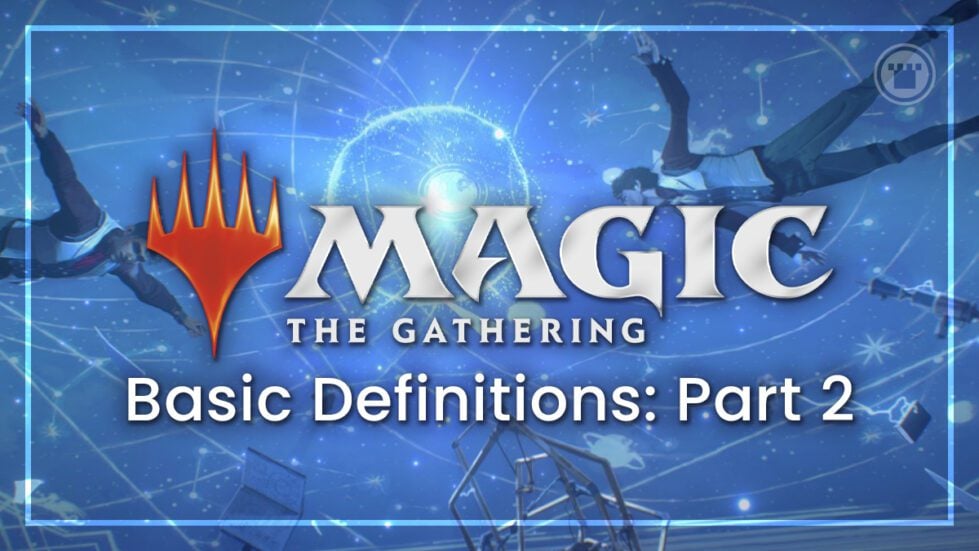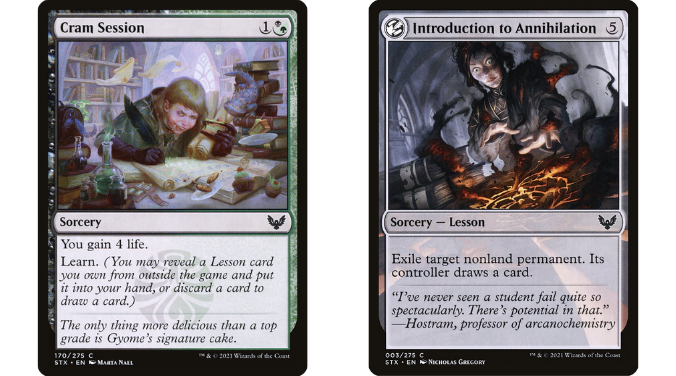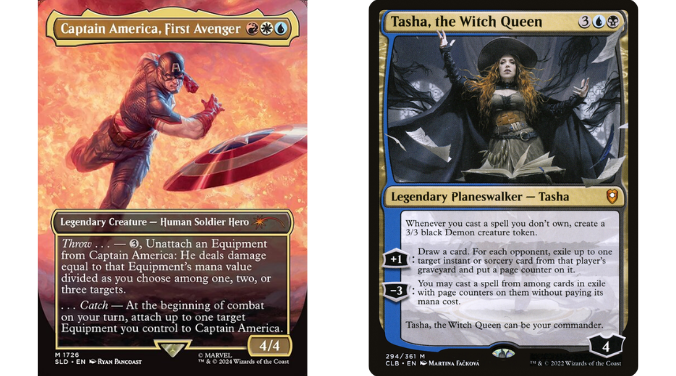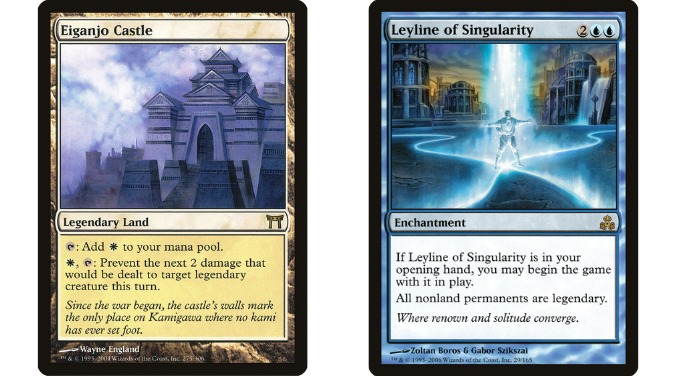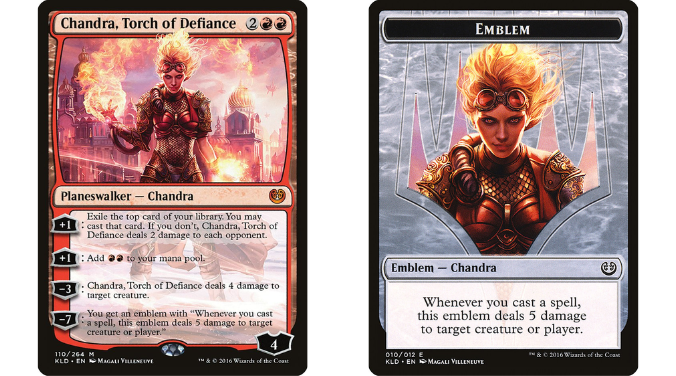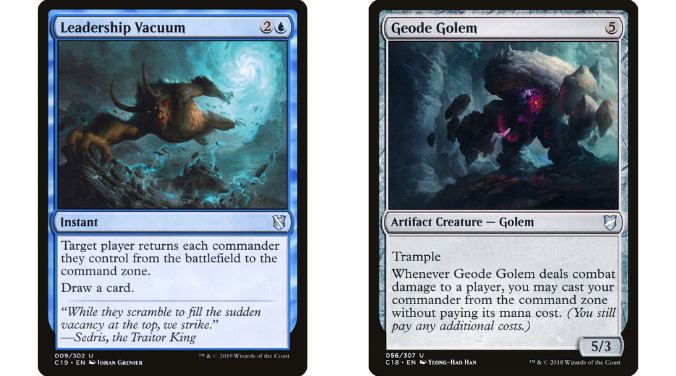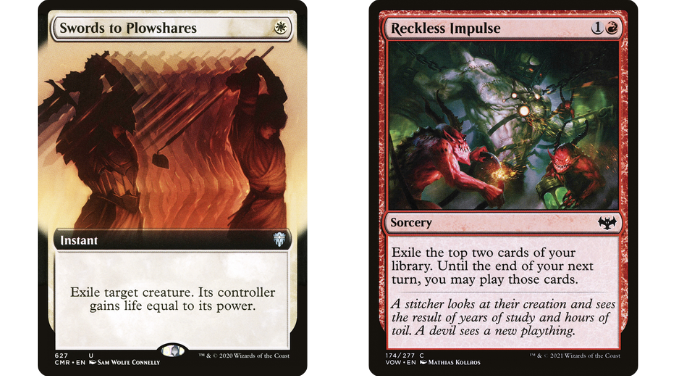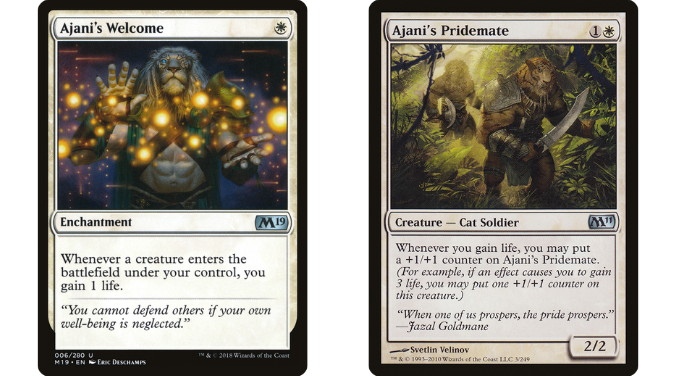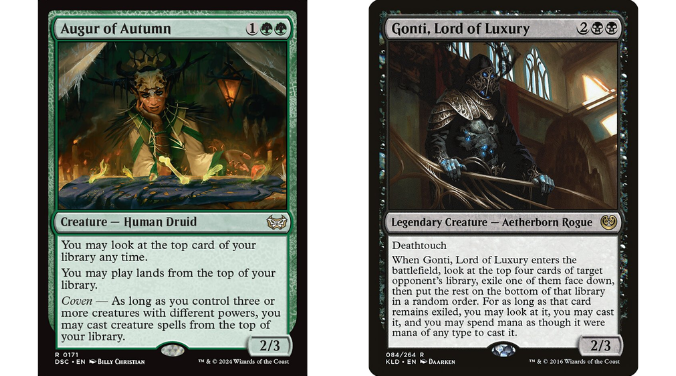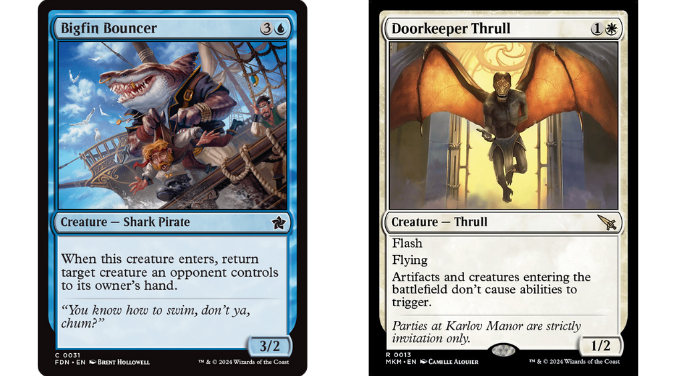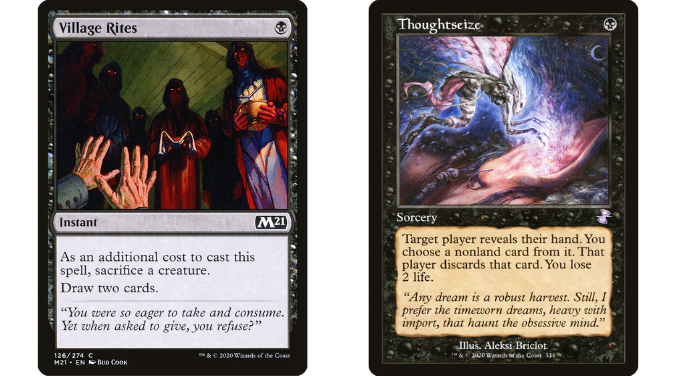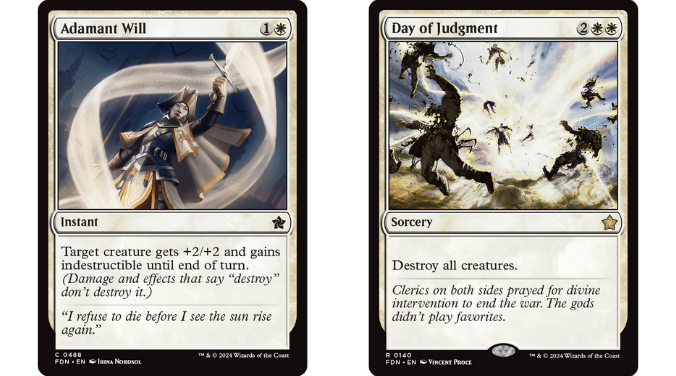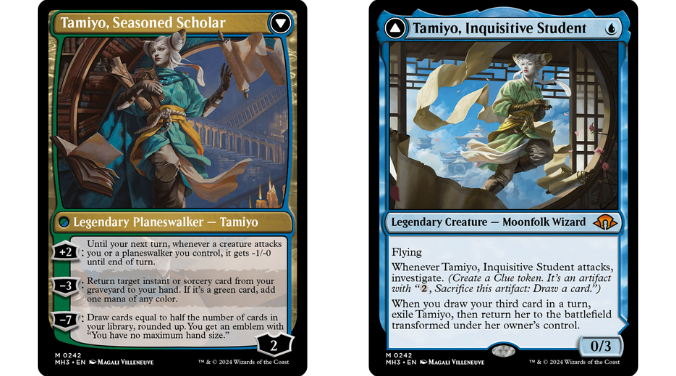Players who pick up Magic: The Gathering for the first time face an intimidating learning curve, that’s for sure. But the first and most important step is mastering the game’s unique language: an arcane vocabulary of keywords, rules terms and specific phrasing that holds the key to understanding every card from the last thirty years of Magic.
I already got through some of the basic essentials in Part 1 of this article (check it out if you haven’t), but there’s still plenty of key terms you might need to get through your early Magic career. Here’s another batch of them:
Format
This isn’t a term that comes up during a game, but it can be very important when trying to find a game in the first place! Magic isn’t just one game, you see: it has many officially recognised variants, most of which set out different rules on what constitutes a legal deck. It’s important to understand which format you’re playing even in casual matches, since these rules ensure relatively balance and interesting matchups.
The most important and popular formats are Commander (100 card decks, mostly casual multiplayer), Standard (60 card decks, cards more than three years old are illegal), Modern (60 card decks, cards printed before 2003 are illegal) and Draft (40 card decks, built by opening brand-new booster packs and choosing cards from what you find). I recommend trying these different kind of Magic once you’re confident in the rules to figure out which you like best!
Sideboard
Sideboards are a part of deckbuilding for many Magic formats, especially those geared towards tournament competition. In addition to your main decklist, these formats allow a secondary list (almost always 15 cards maximum) that act sort of like substitute players in traditional team sports.
When you play a best-of-three or best-of-five match in a sideboard format, both players get the opportunity to edit their decks slightly by moving cards from the sideboard into their main deck and vice versa. These are not permanent edits though – you must reset to the registered deck list before your next match. Cards in your sideboard can sometimes be accessed during the game, including game one, by using mechanics which search for them “outside the game” such as Learn.
Commander
“Commander” can refer either to Magic’s current most popular format, or to that format’s most iconic special rule. Every 100 card deck in this format must have at least one card that you nominate as its main character: the eponymous commander.
Your chosen commander must be either a legendary creature, or a card whose rules specifically state that it “can be your commander”. Furthermore, the rest of your deck must be built using only cards which match the colors of that commander. So if I make my commander Captain America, First Avenger (a red-white-blue creature), I cannot use any green or black cards while building that deck.
Commander is almost always played with more than two players and also has other unique rules, including a starting life total of 40 and special ways to win or lose the game. Check out our other content for many more detailed articles explaining this great way to play!
Legendary
A special prefix or “supertype” which can be added to any card’s existing card type, to establish that the card in question represents something unique: a specific named character, item or location. Most Magic cards are not legendary, meaning they represent a more generic castle, or goblin, or helmet. But cards which are legendary are subject to a special rule.
The “legend rule” states that a player may not control more than one legendary object with the same name. If by any means you gain control of a second copy of the same legendary card, you must immediately send one of them to the graveyard. On the other hand, being legendary also makes a creature card eligible to be chosen as a commander, and there are also many cards which specifically benefit legendary creatures.
Command Zone
One of the less important zones defined in the rules, the Command Zone primarily acts as a display area for cards or objects which are technically in the game, but should not usually be interacted with, like planeswalker emblems.
By far the most prominent use of this zone is in the Commander format, where it becomes the start point for the card designated by each player as their commander. A commander in your command zone can be played as though they were in your hand – and if removed from the battlefield, they go back to your Command Zone where you can play them again!
This guaranteed ability to access your commander whenever you need them using the Command Zone allows players to build unique and specialised decks that complement their chosen commander’s abilities.
Exile
Exile is one of the zones of play where cards and objects can exist or move to during a game. It was previously called the “removed from game zone”, which does make clear what it’s meant to be used for.
Exiling a card permanently is an extremely decisive form of removal, making it very hard to access the card again in that game even with reanimation abilities. There are also many effects which exile cards temporarily – as an inconvenience, to give you a chance to look at or play them, or just set them aside while applying other parts of the same effect.
Trigger
“Triggered abilities” are one of the main types of ability cards can have, distinguished by the fact you do not get to choose when they take effect. Instead, they take effect in response to some listed condition becoming true: “whenever you draw a card”, “when the enchanted creature dies”, “at the beginning of your upkeep”.
By default, there is no limit on how many times per turn a triggered ability can take effect – it happens as often as the trigger condition is met. But some triggered abilities will specify they only take effect once per turn, or the first time each turn that conditions are met. Many are optional, but some are mandatory, or even negative for their controller.
It is each player’s own responsibility to keep track of when their own triggers are being met and keep their board state accurately updated based on that.
Cast / Play
This is a case where two words describe the same thing, but one is a bit more specific. When rules text mentions “playing” a card, that means what you think it does – revealing a card from your hand (usually) and announcing you’re using its effects.
“Casting” has an almost identical meaning, except that you cannot “cast” a land card – you can only “play” it. This means if you’re told you “may cast” a card from the top of your library, but that card turns out to be a land, you are not actually able to do anything with it after all! “Play” is more universal and can apply to any card.
Enters / “ETB”
One of the most common kinds of card effect in Magic is a once-off ability that does something as the card first comes into play. Depending on how long ago the card was printed, its rules text may say “when this comes into play”, “when this enters the battlefield”, or simply “when this enters” – they all mean the same thing. These abilities are so common that players abbreviate them to “ETBs”.
Note that cards which say “as this enters” are meaningfully different (these are replacement effects and not triggered abilities; see our Advanced Definitions guide for more information). “Enters” abilities are also distinct from those which trigger as you “play” or “cast” a card. Those abilities only trigger when you use the card normally from your hand, and take effect even if your card is counterspelled. ETBs will trigger every time the card enters the battlefield, from anywhere, for any reason.
Dies
This word is used on more recent cards as a condition for triggering abilities. “Dies” is shorthand for “is put into a graveyard from the battlefield”, and older cards may use the long-winded form in their rules text. This means that a card being sent from the battlefield to exile or some other zone will not trigger “dies” abilities. However, tokens that are sent to the graveyard still count as having “died” even though they cease to exist after leaving the battlefield.
There is also a very similar kind of ability that triggers “whenever a card is put into a graveyard”; note that this version actually does behave differently to the “dies” version in a few subtle ways.
Sacrifice / Discard
These two words can appear on cards either as part of the cost you pay for an effect, or as a form of harm opposing cards can force upon you. To discard, you choose a card from your hand and put it into your graveyard without applying any of its effects. To sacrifice, you choose a permanent you have on the battlefield (including tokens) and put it into your graveyard. In both cases, you get to choose which card you will lose unless specified that your opponent chooses instead.
The rules for sacrificing and discarding are designed such that you cannot take the decision back or “double dip” by benefiting from the loss more than intended. So you cannot use one creature to pay for multiple sacrifice costs at the same time, nor can you play an instant that your opponent has already forced you to discard to still gain its effect. As a rule, creatures you choose to sacrifice can never be saved from dying regardless of what effects or abilities they have – at best you can immediately bring them back to life afterwards.
Destroy / Indestructible
If a card tells you to “destroy” another card, it simply means to send it to the graveyard from the battlefield. Indestructible is a keyword ability which prevents a card being destroyed.
Creatures are also destroyed if they take too much damage in one turn, which means that indestructible creatures are effectively immune to damage as well (including deathtouch). However, effects which simply tell you to destroy a creature do not count as dealing it any damage.
Mulligan
At the start of the game, both players draw their opening hands. If your opening hand feels too weak, or is outright unplayable due to a lack of lands, you have the chance to “take a mulligan” and draw a new one that might be better. You can potentially mulligan that hand as well, although mounting drawbacks prevent you doing this forever.
The exact rules for how to draw your new hand sometimes change depending on the format, but the important thing is to remember that you almost always end up with one fewer cards every mulligan you take. The current mulligan rule for most formats is the “London Mulligan”, where you always redraw a new hand of seven cards regardless of how many mulligans you’re up to, but then return cards from that seven to the bottom of your library until you reach the size you’re meant to be at.
END OF ARTICLE STEP
Thanks for taking the time to absorb these complex but vital pieces of Magic vocabulary with me! I know I still haven’t covered all the jargon that might confront you in your first experience with this game, but I’m sure these words and their meanings will ease that process for you. Make sure you keep an eye out for our Advanced Definitions and similar articles in the future as I attempt to de-mystify the Magic dictionary!
Are you new to Magic and want more content teaching you about the game? Sign-up for our emails and we’ll make sure you’re in the know about new content!

Tom’s fate was sealed in 7th grade when his friend lent him a pile of commons to play Magic. He quickly picked up Boros and Orzhov decks in Ravnica block and has remained a staunch white magician ever since. A fan of all Constructed formats, he enjoys studying the history of the tournament meta. He specializes in midrange decks, especially Death & Taxes and Martyr Proc. One day, he swears he will win an MCQ with Evershrike. Ask him how at @AWanderingBard, or watch him stream Magic at twitch.tv/TheWanderingBard.

